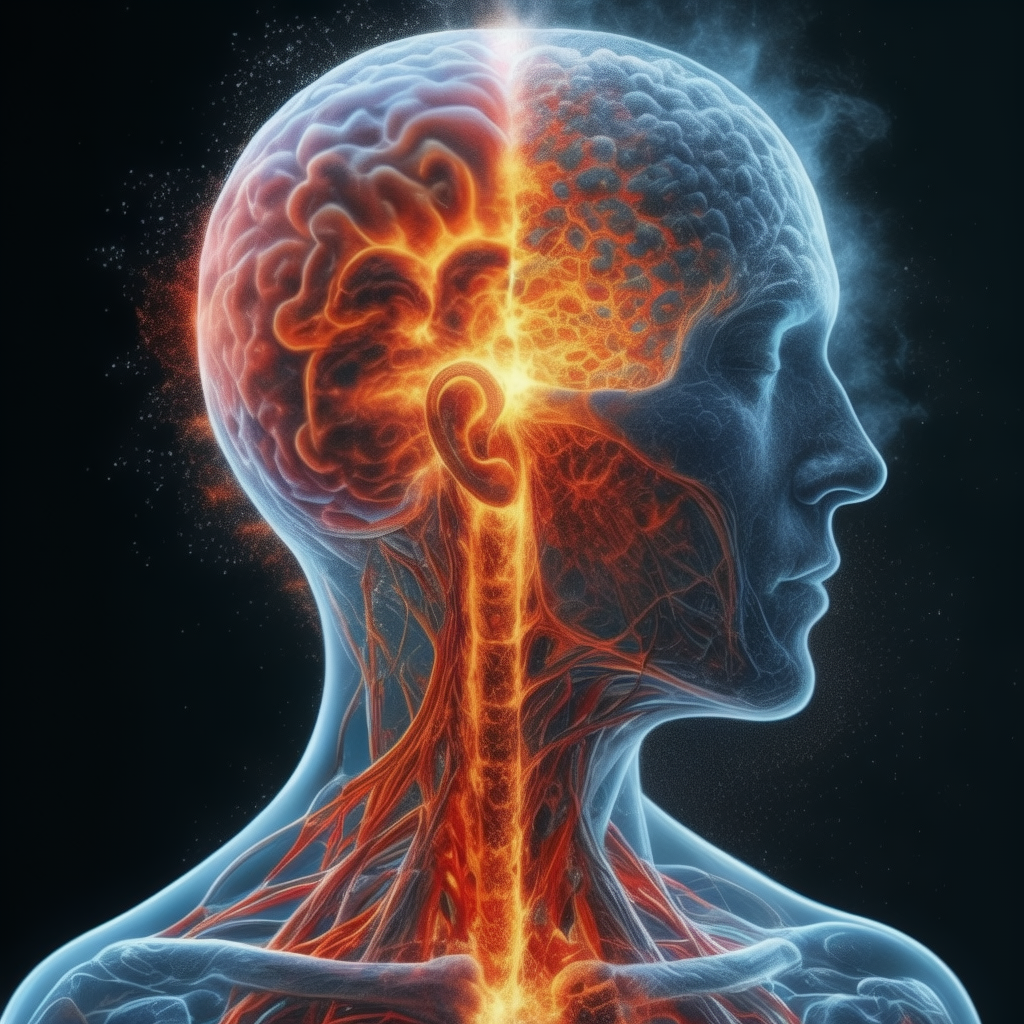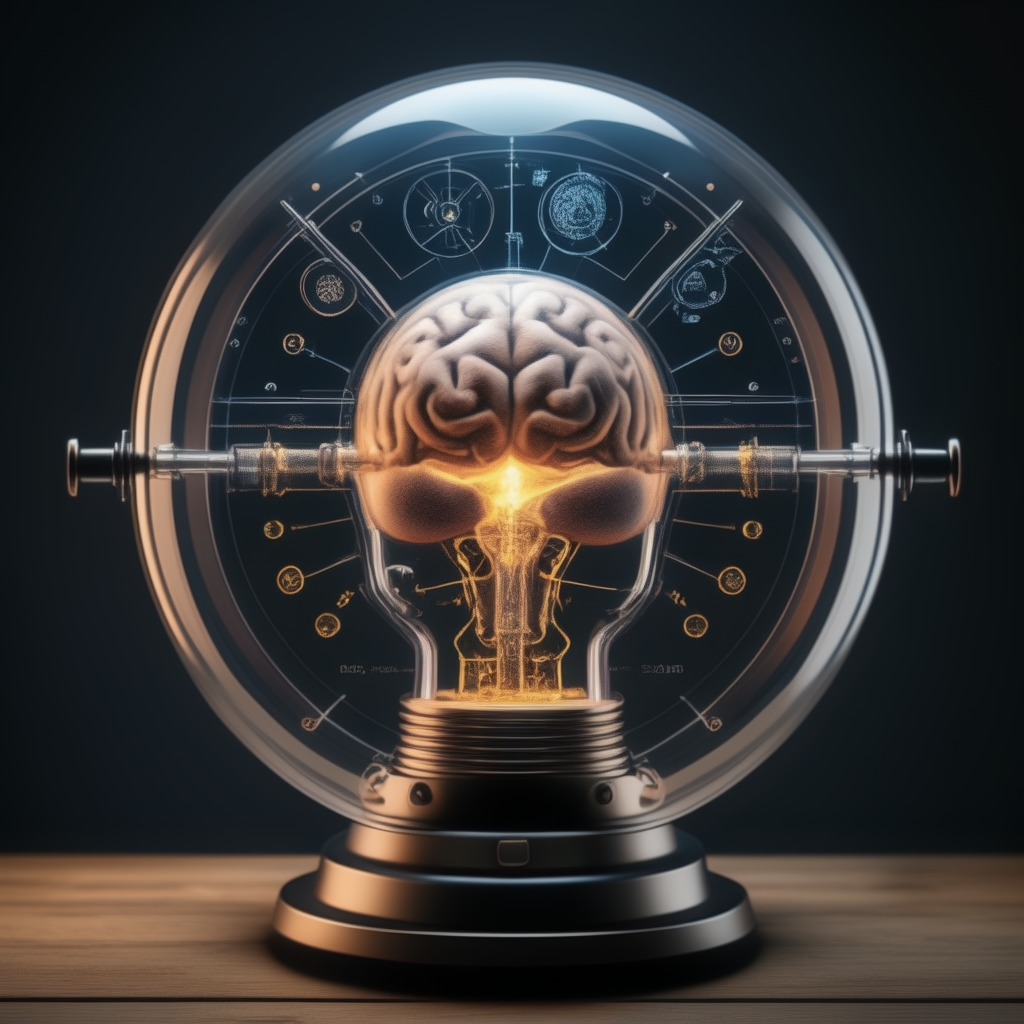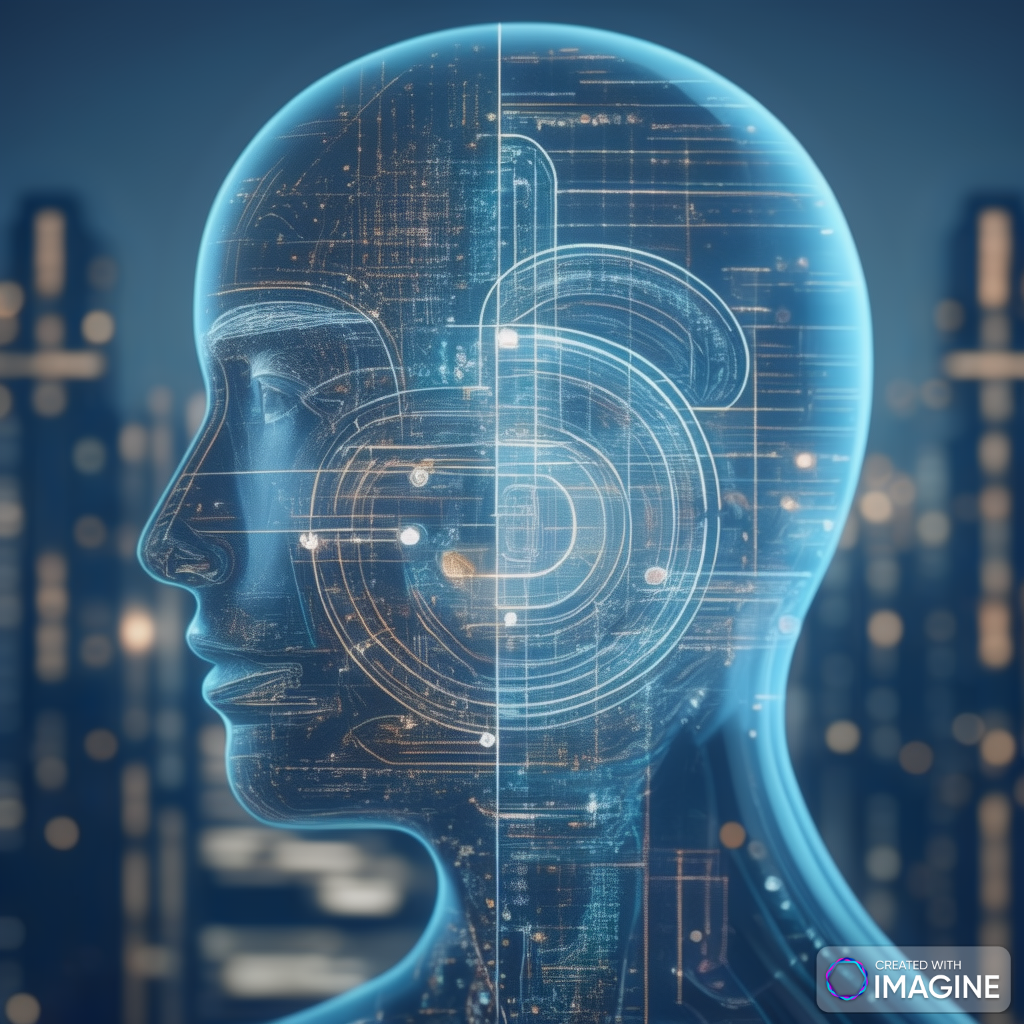Does Our Brain Work in Deterministic as Well as Probabilistic Ways?
The question of whether the brain operates in a deterministic or probabilistic manner is a fascinating one that touches on multiple disciplines, including quantum physics, classical physics, evolution, biology, neuroscience, and artificial intelligence. Let’s explore these perspectives to understand how our brain might integrate both deterministic and probabilistic processes.
Quantum Physics/Mechanics Perspective
Quantum mechanics, the fundamental theory in physics, describes nature at the smallest scales of energy levels of atoms and subatomic particles. At this level, events are not deterministic but probabilistic. The famous Heisenberg Uncertainty Principle suggests that we cannot simultaneously know the exact position and momentum of a particle. This inherent uncertainty introduces a probabilistic nature to quantum events.
Some researchers propose that quantum effects could play a role in brain function, particularly in the microtubules within neurons, as suggested by the Orch-OR theory by Roger Penrose and Stuart Hameroff. However, this remains a controversial and speculative area of research. The brain, being a warm, wet environment, is typically thought to be too chaotic for delicate quantum states to maintain coherence.
Classical Physics Perspective
Classical physics, on the other hand, operates on deterministic principles, where the future behavior of a system can be precisely predicted given its initial conditions. Many processes in the brain, especially at the macroscopic level of neurons and synapses, appear to follow deterministic laws of classical physics. Neuronal firing, synaptic transmission, and action potentials can be described using classical electrical and chemical principles.
Evolution and Biology Perspective
From an evolutionary perspective, the brain has developed through natural selection to enhance an organism’s survival and reproduction. Evolution does not prioritize one method (deterministic or probabilistic) over another but selects for mechanisms that provide adaptive advantages. Probabilistic reasoning allows for flexible and robust decision-making in uncertain environments, a key survival trait.
Biologically, the brain exhibits both deterministic and probabilistic characteristics. For instance, the firing of a neuron is a deterministic event if the membrane potential reaches a certain threshold. However, the synaptic inputs a neuron receives are often influenced by numerous factors, introducing variability and probabilistic elements to whether or not a neuron will fire.
Neuroscience Perspective
Neuroscience provides ample evidence that the brain employs probabilistic mechanisms. Sensory processing, decision-making, and motor control are all influenced by uncertainty and variability. Bayesian models of brain function suggest that the brain constantly updates its beliefs about the world based on incoming sensory information and prior experiences, a fundamentally probabilistic process.
Probabilistic reasoning allows the brain to handle ambiguity and make decisions based on incomplete information. Neural networks, both biological and artificial, rely on probability distributions to process information and learn from data.
Artificial Intelligence and Machine Learning Perspective
Artificial intelligence (AI) and machine learning (ML) are heavily inspired by the probabilistic nature of brain function. Unlike classical computing, which operates in a deterministic manner using binary logic (0s and 1s), AI and ML leverage probabilistic models to make predictions, classify data, and learn from experience. Techniques such as Bayesian networks, hidden Markov models, and neural networks incorporate probability theory to deal with uncertainty and variability in data.
The development of probabilistic AI and ML can be seen as an attempt to mimic the brain’s ability to learn from incomplete information and make flexible decisions. Probabilistic models allow AI systems to generalize from limited data, adapt to new situations, and handle the complexity and variability inherent in real-world environments.
Why Do Different Computational Paradigms Emerge from the Human Mind?
The human mind is capable of conceptualizing and creating diverse computational paradigms because it operates at multiple levels of abstraction and complexity. Classical computing, AI, and quantum computing each address different types of problems and leverage different principles:
- Classical Computing: Uses deterministic logic and is well-suited for tasks requiring precision and repeatability. It is based on Boolean algebra and operates on binary data.
- AI and ML: Use probabilistic models to handle uncertainty, variability, and learning from data. These systems are inspired by the adaptive and flexible nature of human cognition.
- Quantum Computing: Exploits the principles of quantum mechanics to perform computations that are intractable for classical computers, such as factoring large numbers or simulating quantum systems.
These paradigms reflect the multifaceted nature of human cognition, which encompasses both deterministic and probabilistic reasoning. The diversity in computational approaches highlights the brain’s ability to abstract and model the world in various ways, depending on the context and the problem at hand.
To delve deeper into the question of whether the brain operates in both deterministic and probabilistic ways, we can explore additional perspectives that enrich our understanding of this complex topic.
Information Theory Perspective
Information theory, developed by Claude Shannon, provides a framework for understanding how information is encoded, transmitted, and processed. The brain can be seen as an information processing system that encodes sensory inputs, processes this information, and generates outputs.
- Entropy and Uncertainty: Information theory introduces the concept of entropy, a measure of uncertainty in a system. The brain constantly deals with entropy when processing sensory inputs and making decisions. Higher entropy indicates more uncertainty, requiring probabilistic processing to manage this uncertainty.
- Error Correction: The brain employs mechanisms akin to error correction codes in information theory. For example, redundant pathways and feedback loops in neural circuits help mitigate errors and noise, ensuring reliable information processing despite inherent variability.
Cognitive Psychology Perspective
Cognitive psychology investigates the mental processes underlying perception, learning, memory, and decision-making. It provides insights into how the brain integrates deterministic and probabilistic elements.
- Heuristics and Biases: Humans often use heuristics—simple, efficient rules or mental shortcuts—to make decisions quickly and efficiently. These heuristics are probabilistic in nature, allowing for rapid judgments under uncertainty. However, they can also lead to systematic biases and errors, highlighting the probabilistic aspects of cognitive processing.
- Cognitive Load: The concept of cognitive load refers to the amount of mental effort required to process information. When cognitive load is high, the brain may rely more on probabilistic shortcuts and approximations to manage the processing demands, balancing accuracy and efficiency.
Behavioral Economics Perspective
Behavioral economics combines insights from psychology and economics to understand decision-making under uncertainty. It provides a rich context for exploring the probabilistic nature of human behavior.
- Prospect Theory: Developed by Daniel Kahneman and Amos Tversky, prospect theory describes how people make decisions involving risk and uncertainty. It shows that humans often violate the principles of classical economics, which assume rational and deterministic decision-making, in favor of probabilistic reasoning influenced by psychological factors.
- Nudging: Behavioral economics introduces the concept of nudging—structuring choices in a way that influences behavior without restricting options. Nudging leverages probabilistic insights into human behavior to promote desirable outcomes, such as healthier lifestyles or better financial decisions.
Evolutionary Psychology Perspective
Evolutionary psychology explores how evolutionary pressures have shaped the human mind and behavior. It provides a context for understanding the adaptive significance of probabilistic and deterministic processes.
- Survival and Reproduction: Evolutionary pressures have favored the development of brain mechanisms that enhance survival and reproductive success. Probabilistic reasoning allows for flexible adaptation to changing environments and uncertain conditions, providing an evolutionary advantage.
- Social Cognition: Human social behavior is inherently complex and uncertain. The brain’s ability to interpret social cues, predict others’ intentions, and navigate social interactions relies on probabilistic reasoning, reflecting the evolutionary importance of social cognition.
Neuroplasticity Perspective
Neuroplasticity refers to the brain’s ability to reorganize itself by forming new neural connections throughout life. This plasticity illustrates how the brain balances deterministic and probabilistic processes.
- Experience-Dependent Plasticity: The brain’s structure and function are shaped by experiences, with synaptic connections strengthening or weakening based on use. This process involves both deterministic changes (e.g., long-term potentiation) and probabilistic factors (e.g., variability in synaptic response).
- Critical Periods: Certain periods in development are critical for acquiring specific skills, such as language or motor abilities. These periods reflect deterministic developmental trajectories, while individual variability and environmental influences introduce probabilistic elements.
Computational Neuroscience Perspective
Computational neuroscience uses mathematical models and simulations to understand brain function. It provides a detailed perspective on the interplay between deterministic and probabilistic processes.
- Neural Network Models: Computational models of neural networks simulate how neurons process information. These models incorporate both deterministic elements (e.g., activation functions) and probabilistic factors (e.g., synaptic weight changes based on learning algorithms).
- Stochastic Processes: Many computational models include stochastic processes to account for the inherent variability and noise in neural activity. These stochastic models help explain how the brain maintains robust function despite the probabilistic nature of individual neural events.
Systems Biology Perspective
Systems biology approaches the brain as a complex, adaptive system composed of interacting components. It provides insights into how deterministic and probabilistic processes are integrated across different levels of organization.
- Multiscale Integration: The brain operates across multiple scales, from molecular and cellular levels to circuits and systems. Deterministic processes at lower levels (e.g., gene expression, protein synthesis) interact with probabilistic processes at higher levels (e.g., network dynamics, behavior).
- Emergent Properties: The brain exhibits emergent properties that arise from the interactions of its components. These properties cannot be predicted solely from the behavior of individual parts, highlighting the importance of both deterministic and probabilistic interactions.
Comparative Neuroscience Perspective
Comparative neuroscience examines the similarities and differences in brain function across species, providing a broader evolutionary context.
- Species-Specific Adaptations: Different species have evolved unique adaptations in brain structure and function to address their specific ecological niches. Comparing these adaptations reveals how deterministic and probabilistic processes are balanced in diverse environments.
- Convergent Evolution: Instances of convergent evolution, where different species develop similar traits independently, demonstrate how similar probabilistic reasoning strategies can evolve in response to common environmental challenges.
Additional Perspective: The Big Bang and Human Frequencies
Cosmological Perspective
The Big Bang theory posits that the universe began as an infinitely small, hot, and dense point approximately 13.8 billion years ago. This initial singularity contained all the energy and matter that would eventually form the universe. When the Big Bang occurred, it led to the rapid expansion and cooling of the universe, resulting in the formation of subatomic particles, atoms, and eventually galaxies, stars, and planets.
- Expansion and Distribution: As the universe expanded, matter and energy were distributed unevenly, leading to variations in density and temperature. These variations caused fluctuations in the cosmic microwave background radiation, which we can still observe today. The distribution of matter in the universe follows a probabilistic pattern influenced by quantum fluctuations in the early universe.
- Frequency and Vibration: The particles created in the aftermath of the Big Bang possess intrinsic properties such as mass, charge, and spin. These properties determine their behavior and interactions, often described in terms of frequencies and vibrations. For example, electromagnetic waves, which include light, have different frequencies that correspond to different colors.
Human Perspective
Humans, like all matter, are composed of atoms and molecules formed from subatomic particles. These particles originated from the early universe and carry the imprint of the universe’s probabilistic nature.
- Atomic and Molecular Frequencies: Atoms and molecules exhibit specific frequencies associated with their vibrational and rotational states. These frequencies determine how they interact with electromagnetic radiation, which is the basis for techniques like spectroscopy used to identify chemical substances.
- Biological Rhythms: On a larger scale, biological systems, including humans, operate on various rhythms and frequencies. These include circadian rhythms (the roughly 24-hour cycle of biological processes), heartbeats, and brain waves. Brain waves, for instance, are electrical impulses in the brain that vary in frequency and are associated with different states of consciousness (e.g., alpha waves for relaxation, beta waves for alertness).
Integrating Cosmology and Neuroscience
The concept that humans operate on different frequencies can be seen as an extension of the fundamental principles of the universe. The frequencies and vibrations at the atomic and molecular levels influence the larger biological systems, including the human brain.
- Quantum Influences on the Brain: While the direct impact of quantum mechanics on brain function is still debated, the probabilistic nature of quantum events provides a foundational perspective on the variability and uncertainty inherent in biological processes. The idea that brain function may incorporate quantum effects adds a layer of complexity to our understanding of how the brain integrates deterministic and probabilistic processes.
- Harmonic Resonance: Some theories suggest that certain frequencies and vibrations can affect biological systems, including the brain, through harmonic resonance. This concept posits that specific frequencies can enhance or disrupt the function of biological molecules and cells, potentially influencing health and behavior.
Conclusion
The brain’s ability to operate in both deterministic and probabilistic ways is deeply intertwined with the fundamental principles that govern the universe. From the initial expansion of the universe during the Big Bang to the complex frequencies and vibrations of atoms and molecules, the probabilistic nature of the cosmos is mirrored in the intricate workings of the human brain. By exploring these connections, we gain a deeper appreciation of how our brain’s dual nature is rooted in the very fabric of the universe.
The brain’s ability to operate both deterministically and probabilistically is a testament to its complexity and adaptability. Each perspective—information theory, cognitive psychology, behavioral economics, evolutionary psychology, neuroplasticity, computational neuroscience, systems biology, and comparative neuroscience—contributes to a deeper understanding of how these processes coexist and interact. By integrating insights from these diverse fields, we gain a richer appreciation of the brain’s multifaceted nature and its remarkable capacity to navigate an uncertain world.
The brain operates using both deterministic and probabilistic mechanisms. Deterministic processes are evident in the predictable firing of neurons and the transmission of signals, while probabilistic processes are crucial for decision-making, sensory processing, and learning. This duality is mirrored in artificial systems, where classical computing handles precise, repetitive tasks, and AI/ML addresses uncertainty and variability. The human mind’s ability to conceive different computational paradigms underscores its adaptability and complexity, reflecting the intricate interplay of deterministic and probabilistic processes in our cognition.







